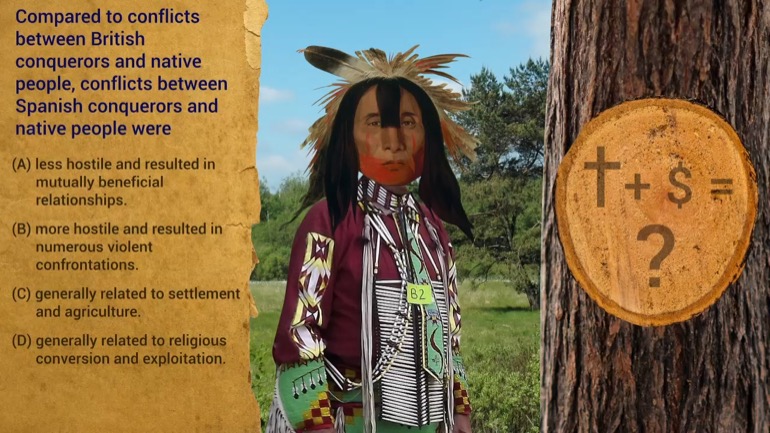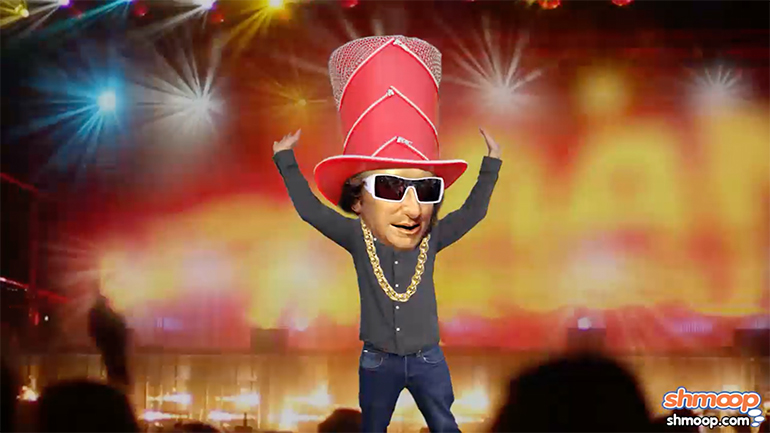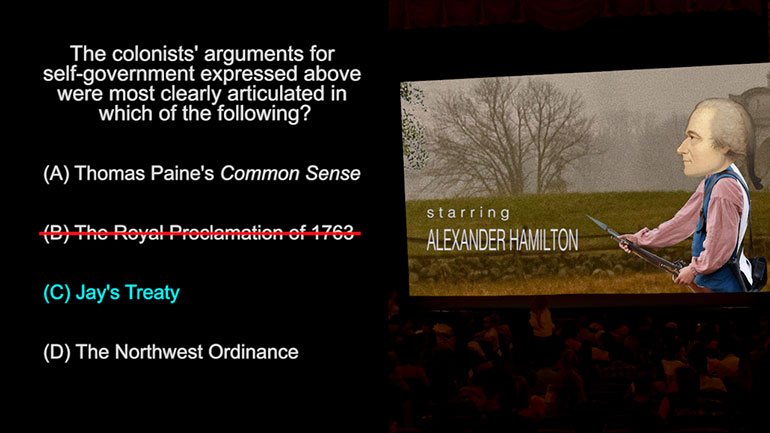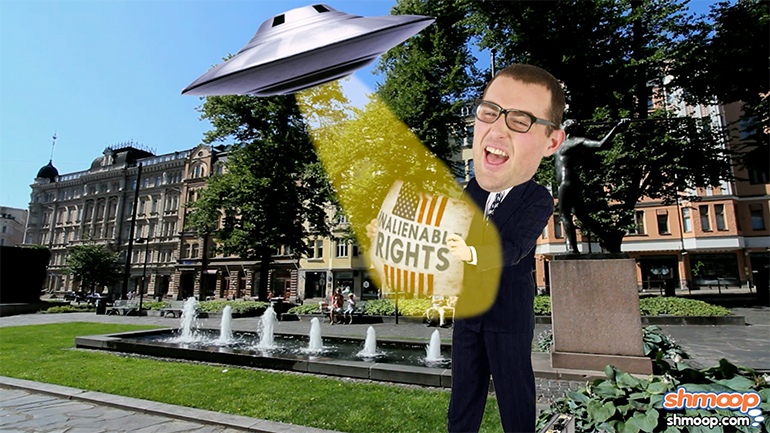ShmoopTube
Where Monty Python meets your 10th grade teacher.
Search Thousands of Shmoop Videos
Period 3: 1754–1800 Videos 20 videos
AP U.S. History 1.1 Period 3: 1754–1800. Why was the power to declare war granted to Congress by the Articles of Confederation ineffectual?
AP U.S. History 1.2 Period 3: 1754-1800. The structure of the government that the Articles of Confederation established most clearly reflects the R...
AP U.S. History 3.4 Period 3: 1754-1800. Common Sense had the most in common with which of the following?
AP U.S. History Period 3: 1754-1800 Drill 4.4 16 Views
Share It!
Description:
Westward, ho! We’ve got some wild, wild trivia for ya here, you're darn tootin’.
Transcript
- 00:03
And here's your Shmoop du jour, brought to you by pioneering spirit.
- 00:06
It's defined as the willingness to endure for the sake of exploration. [pioneer faces bear]
- 00:11
Sounds like a lot of effort... we would have just stayed in bed. All right, check
- 00:14
out the excerpt. "It appears..." [excerpt shown]
- 00:18
All right, here's our question: The trend described in the excerpt reflects which of the [question shown]
Full Transcript
- 00:22
following developments? And here your potential answers... [answers shown]
- 00:27
Well, this excerpt is about Americans and exploring the Wild West. A bold move, [Pioneer and Native American fight]
- 00:32
seeing as people were already living there. The urge to go west was definitely
- 00:36
not limited to privileged groups like A suggests, so we know this isn't our answer. [A ruled out]
- 00:40
A lot of folks who headed west were actually hanging out on the bottom rung
- 00:43
of settler society and went west looking for something better... probably In-N-Out. [poor settlers pictured]
- 00:48
And you definitely need some serious motivation to go deal with hungry bears,
- 00:51
hostile American Indians, threat of starvation, and nasty diseases. Well, maybe [pioneer fights off threats]
- 00:56
that motivation was animal style fries, or maybe some just didn't know what they
- 01:01
were getting themselves into. C tells us that westward expansion created
- 01:05
culturally homogenous communities, which
- 01:07
means communities made up of the same [homogenous community shown]
- 01:08
kinds of people. This isn't true. Lots of different kinds of people headed west, [C ruled out]
- 01:12
from recent European immigrants to people whose families had been in North
- 01:15
America since the colonial days, and when all these people started hobnobbing out [diverse group of people]
- 01:20
west, well, totally new and diverse cultures began to flower. We'd like to [unsettling clown family]
- 01:24
tell you choice D is true--that when all the diverse cultures met out west, they [D ruled out]
- 01:28
created a magical happy land where everybody got along. We'd also like to [people eat peacefully]
- 01:33
tell you that we found the answer to world peace and the cure for all disease,
- 01:36
but we can't. The West was full of social and ethnic tension, just like everywhere [people jumping with flags]
- 01:40
else in the world. Maybe one day, we'll figure out how to achieve that magical
- 01:44
happy land. All right, well, the correct answer is B. As the excerpt tells us, all [rainbow utopia]
- 01:48
types of Americans were heading west. The key word here is "inherent." The author is
- 01:52
making the claim that all Americans just naturally wanted to enlarge their [B chosen as correct answer]
- 01:57
dominion. In other words, it's a universal trend... like eating In-N-Out for every [people want to expand]
- 02:02
meal. That might just be an us trend, come to think of it... yeah. [people at In-N-Out]
Related Videos
AP U.S. History Diagnostic 1. Relationships like the one shown in the image resulted in the development of...what?
AP U.S. History Diagnostic 15. How did groups like the ones represented by the image influence industry in America?
AP U.S. History Diagnostic 10. What led to the splintering of the political parties shown in the image?
AP U.S. History Diagnostic 11. The election results shown in the image led to...what?
AP U.S. History Diagnostic 12. How did the Reconstruction Acts open up political opportunities for former slaves?
























